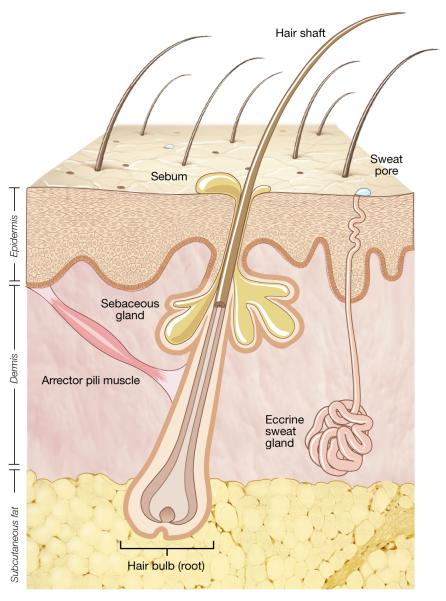Figure 2.
Representation of human skin. The topographical surface of human skin is irregular and consists of multiple skin appendageal structures including hair follicles, sebaceous (oil) glands, and sweat glands and ducts. Each of the skin appendages provides a potential niche for skin bacteria. The external communication of the skin with the terrestrial environment and the heterogeneity of the appendageal invaginations contribute to the diversity of the skin microbiome.

